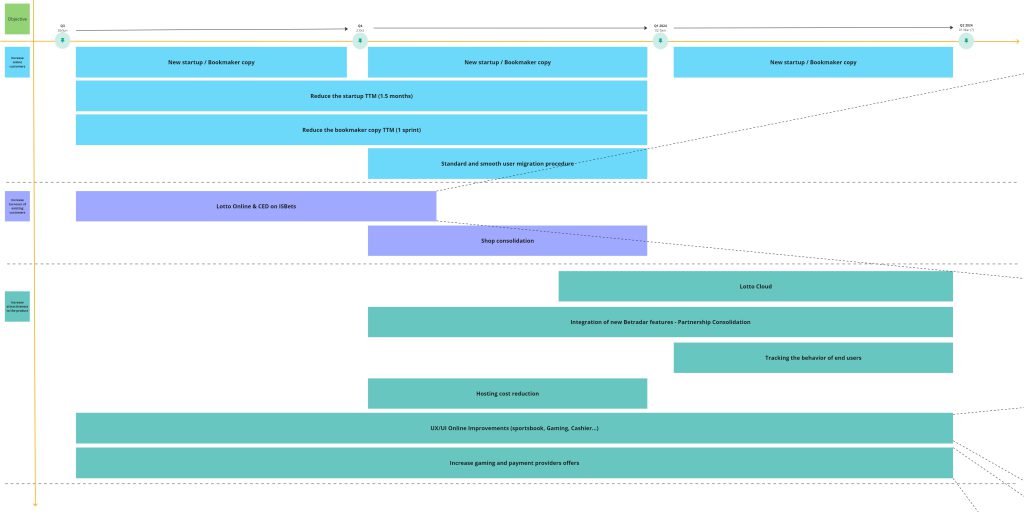A focused product roadmap and ongoing attention to market and customer needs are essential tools for guiding the development and evolution of a product over time. Therefore, we constantly strive to build strong, purposeful product roadmaps. The steps we follow to build our roadmaps are summarized below:
1) Listening, comparing, and sharing customers’ ideas (current and otherwise): the first key step in creating a successful product roadmap is to actively listen to customers, both current and potential customers. From these discussions, in which ideas are shared, we are able to identify wants and needs, which we then reworked and implemented into new improvements. This approach ensures that new features are developed in line with market demands.
2) Identification of the pains and gains of the current product from the perspective of our customers: once the feedback has been collected, it is important to conduct a detailed assessment of the strengths and points of improvement of the current product. In this way we are able to focus development efforts by providing concrete solutions.
3) Analysis of the market in which we want to focus strategically: before defining a roadmap, we need to understand and study the market in which our customers operate. Market analysis includes evaluating trends and competitors in order to identify emerging opportunities and growth areas. This step allows us to guide strategic decisions to focus resources in a targeted manner.
4) Defining a business model: the product roadmap includes a clear and sustainable business model that is able to maintain a mutually profitable relationship, thus ensuring that the partnership with the customer is solid and long-lasting.
5) Defining metrics to measure success: without defining metrics it is difficult to measure the success of new initiatives and features. These metrics are monitored on a monthly basis to assess the achievement of goals and to make any improvements along the course of the project.
6) Defining the product roadmap: once all the points above are in place, we define the product roadmap that clearly outlines the development phases, new features, and planned enhancements to the product over time. Timelines and priorities are also defined to maintain a consistent and progressive picture of development activities.
7) Definition of a prioritized portfolio backlog to be presented at Quarter Plans: the next step is to define a portfolio backlog that reflects both the product vision and the defined roadmap, and includes items prioritized based on urgency and importance. This portfolio backlog is presented in the quarter plans, ensuring transparent and aligned communication with internal stakeholders.
8) Continuous and ongoing monitoring of metrics: once new features are launched, we are committed to constantly monitoring success metrics to assess whether the product is achieving the goals that have been set. This allows us to adapt the strategy in real time, making changes and optimizations according to market needs as the emerge.
The product roadmap is a key tool to ensure that the customer is actively involved in the software development process, that there is transparency regarding the progress of the platform, and that timely action can be taken if changes are to be made to the schedule. It helps improve communication, collaboration, and overall customer satisfaction throughout the working relationship.
In addition, it is important to note that a product improvement roadmap can have a significant impact on customer investment planning. It provides clear guidance on future directions of the software product and developments in the pipeline. It provides customers with a long-term view so that they can take advantage of the new features and enhancements made available in a productive way.
Thus, through listening to customers, market analysis, and the creation of a well-structured, customer-focused product roadmap, we are able to guide product development strategically and respond effectively to market needs. At the same time, customers can make decisions about their investments and grow their business in an informed and organic way.

